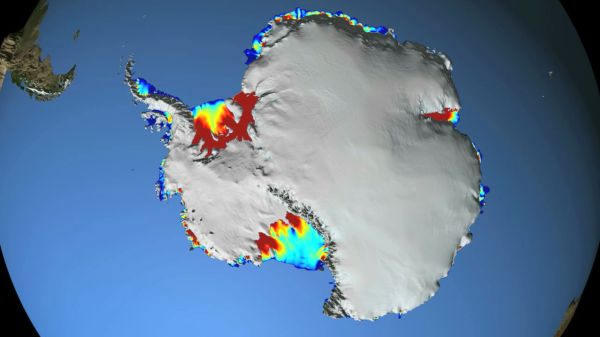Based on the data relayed back by NASA’s Ice, Cloud & land Elevation Satellite (ICESat), the geo reconnaissance satellite scientists are now asserting that warm water currents of oceans reaching Antarctic landscapes, attacking the bottom of the ice shelves is actually a major reason behind recent acceleration in Antarctic ice loss. The data obtained by the scientists has enabled them to effectively differentiate between the two known causes of ice melting in the Polar areas; one is the flowing of warm air causing it to melt from above, and the other is warm water current causing it to melt from below. This new finding has strengthened the argument of that school of scientists who rejected the projection of sea water level rising in the future caused by green house gases.

Researchers concluded this study brought 20 ice shelves, situated mostly in the West Antarctica are thinning and melting due to ocean driven factor, especially the flowing of warm oceanic currents.
Hamish Pritchard, the lead researcher, pointed out that these Antarctic ice shelves can actually lose an awful amount of ice caused by the heat released by the water currents. The amount of ice lost by this factor is actually stunningly higher than the amount of ice actually lost in the surface above, by warm air.

The cutting edge laser instruments mounted on the ICESAT, took measurement of heights of ice shelves from various levels and a time series of 4.5 million surface height data was constructed, within a time span of three years, from 2003 to 2008. Based on the massive amount of data collected, a reliable computer model was erected, which led the scientists to make this new revelation. Buoyed by the results of this satellite data backed study, scientists are hopeful that in the future similar studies will enable them to predict the changes in sea level in a more reliable way.
Via: Nasa




